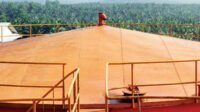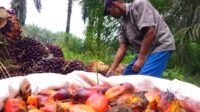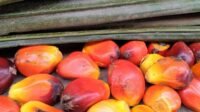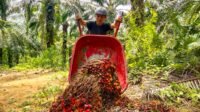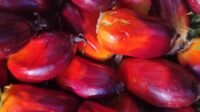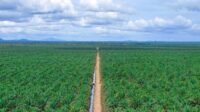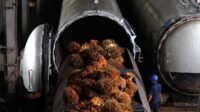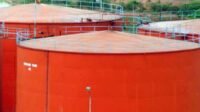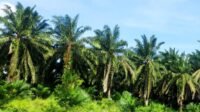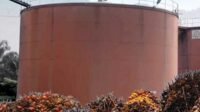PALMOILMAGAZINE, KUALA LUMPUR — Public Investment Bank Bhd has maintained a neutral outlook on Malaysia’s plantation sector, projecting that crude palm oil (CPO) prices will remain stable in the second half of 2025, ranging between RM4,000 and RM4,300 per metric ton. The forecast is supported by steady stock levels and improving export momentum.
In a research report released on Friday, the bank noted that current price stability is underpinned by CPO stockpiles exceeding 2 million tons and stronger exports, thanks to palm oil’s price advantage over soybean oil.
“As of this report, CPO futures are trading at RM4,330 per ton. Export momentum—particularly to India—is expected to pick up due to the wide price gap with soybean oil and India’s low domestic stock levels,” the report stated, as quoted from The Edge Market on Monday (July 28, 2025).
Also Read: PalmCo CEO Highlights Challenges in Palm Oil Sector, Urges Collaboration and Digital Transformation
The bank reaffirmed its full-year 2025 CPO price forecast at RM4,200 per ton. It also highlighted two recommended plantation stocks—Sarawak Plantation and Ta Ann—both offering attractive dividend yields between 5% and 6%.
While the sector experienced cost pressure in H1 2025 due to minimum wage hikes and rising fertilizer prices, production costs are expected to ease in the second half. This is attributed to improved fresh fruit bunch (FFB) yields and additional income from palm kernel by-products.
“Increased productivity and palm kernel credit should help alleviate cost burdens,” the bank noted.
Another cost-mitigating factor is the implementation of a 2% mandatory Provident Fund (EPF) contribution for foreign workers starting October 2025, which is projected to reduce labor costs by less than 1%.
On the policy front, Indonesia’s B40 biodiesel mandate remains on track and is anticipated to boost long-term demand for palm oil as a biofuel feedstock. However, the bank also cautioned about environmental risks, including rising hotspots in Sumatra and Kalimantan, which could lead to transboundary haze if dry weather persists.
In contrast, Malaysia’s oleochemical industry continues to face pressure from weak global demand and price volatility, especially for producers reliant on palm kernel oil and export markets. The stronger ringgit has also weighed on revenue for major players such as SD Guthrie, KLK, and IOI Corp.
Regarding international trade, the U.S. decision to impose a 25% tariff on Malaysian palm oil products is not expected to have a significant impact, as the U.S. accounts for less than 3% of Malaysia’s total palm oil exports in 2024.
Conversely, the U.S. government’s plan to expand its biofuel mandate could lead to higher soybean oil prices, ultimately enhancing palm oil’s competitiveness in the global market.
Overall, Public Investment Bank remains cautiously optimistic, noting that a recovery in exports, lower production costs, and rising biofuel demand could support the resilience of Malaysia’s palm oil sector in the coming months. (P2)





